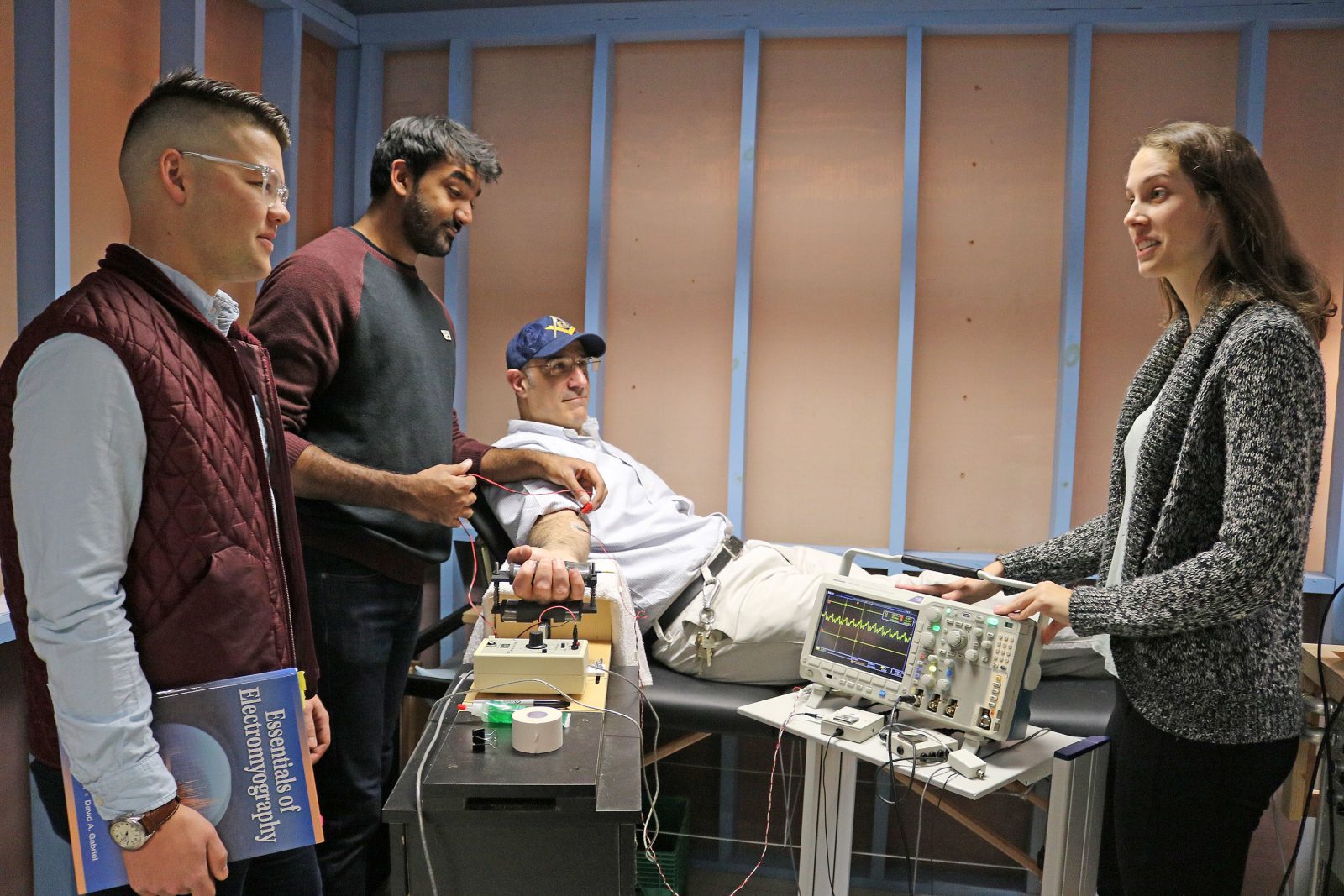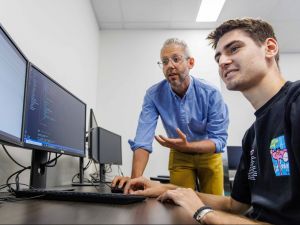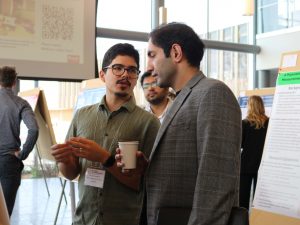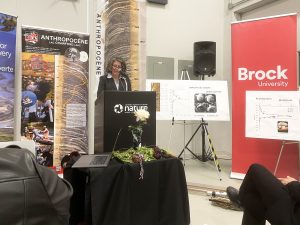 A Brock research team is developing an electrode placed on the skin that gathers more information on electrical activity in muscles than current surface electrodes. Pictured from left to right are graduate students Tom Hoshizaki, Robert Kumar, Professor of Kinesiology David Gabriel and graduate student Lara Green.
A Brock research team is developing an electrode placed on the skin that gathers more information on electrical activity in muscles than current surface electrodes. Pictured from left to right are graduate students Tom Hoshizaki, Robert Kumar, Professor of Kinesiology David Gabriel and graduate student Lara Green.Kinesiologist David Gabriel knows the thought of getting a needle is tormenting for many people.
It’s part of the reason why the Brock University professor and his team of graduate students are working on improving the accuracy of needle-free electromyography (EMG).
Years ago, Gabriel worked at the Mayo Clinic in Minnesota, where part of his job was trying to calm the nerves of patients undergoing traditional electromyography tests, which measure electrical activity in muscles.
The EMGs are part of a battery of tests doctors use to determine if someone has a neuromuscular disease such as muscular dystrophy, multiple sclerosis or Parkinson’s. To capture and record this electrical activity, doctors have typically inserted needles into the muscles of patients, who are then asked to contract these muscles by flexing, bending, lifting objects and performing other movements of varying intensities.
It can be a painful ordeal, as Gabriel witnessed.
“Just to have somebody there to hold hands and to help people get over the fear of the procedure, that made an impact on me,” he recalls.
Decades later, the professor of Biomechanics and his team have found a way to gather the same level of sophisticated readings — minus the needle.
“We’ve developed software that allows us to gain more information about how the nervous system is controlling the muscle using a non-invasive electrode,” he says.
In the conventional procedure, the needle taps into a bundle of muscle fibres called a motor unit. The electrical activity gets greater as more muscles, and, hence, more force, are needed to perform a task.
The needle picks up a signal from the motor unit and transmits the signal to the EMG, which breaks it down into five electrical measurements: amplitude, waveform, time duration, phase and peaks.
The readings can give a clear indication of disease.
Non-invasive electrodes placed on the skin have also been used to measure electrical activity in conventional testing. But these electrodes pick up readings from dozens of motor units at a time, making it difficult to discern clear patterns.
“We developed a pattern classification technique that analyses all five measures you would normally get from a needle electrode,” says Gabriel. “Our technique says ‘OK, when these measures change this or that way, here is what’s going on underneath the skin inside the muscle.’ Before, you needed the needle to do that.”
Gabriel stresses that it’s early days for the new surface electrode technique, which he and graduate students Greig Inglis, Lara Green, Tom Hoshizaki, Robert Kumar and Matt Mallette are developing.
“Right now, we’re not at a stage where we can replace the needle, but at this stage, we’re starting to get some of the same results,” he says.
Gabriel says even if some of the needles can be replaced, easing patients’ pain and fears is well worth it.








